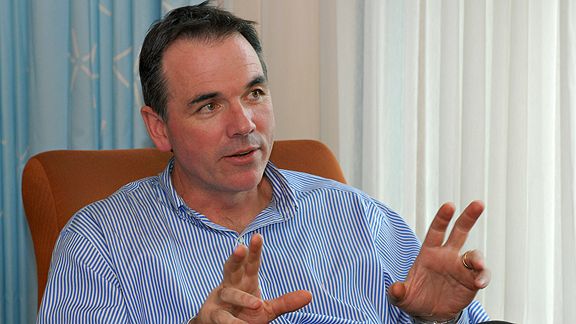Robert Bryce gets on his soapbox and Slate.com and takes his shots at wind energy. He argues that wind is unreliable, and that the opportunity costs of installing wind generation displace other infrastructure investments. He cites the situation in the Lone Star State, which has been at the fore of installing wind power:
On Aug. 4, at about 5 p.m., electricity demand in Texas hit a record: 63,594 megawatts. But according to the state’s grid operator, the Electric Reliability Council of Texas, the state’s wind turbines provided only about 500 megawatts of power when demand was peaking and the value of electricity was at its highest.
Put another way, only about 5 percent of the state’s installed wind capacity was available when Texans needed it most. Texans may brag about the size of their wind sector, but for all of that hot air, the wind business could only provide about 0.8 percent of the state’s electricity needs when demand was peaking.
Certainly, because wind power only works when the wind blows, building wind capacity doesn’t reduce the need for other base load capacity.
And the wind capacity isn’t cheap, either. Professor Michael Giberson over at Knowledge Problem has tracked the incidence of negative prices paid for wind.
Negative prices? Wha? Isn’t that the definition of cheap?
Not exactly. I’ll let him tell you:
This seems a little crazy. During these negative price periods, suppliers are paying ERCOT to take their power. Consumers (at least at the wholesale level) are getting paid for using power, and the more power consumers use the more they get paid. These prices are a big anti-conservation incentive. You could, as a correspondent put it to me, build a giant toaster in West Texas and be paid by generators to operate it.
The giant toaster metaphor will be with me for a long time.
The logic is at the margin, of course. If I pay (subsidize) a farmer $10 for every bushel he sells, we would expect him to be willing to pay, say, $5 to take it off his hands — a that is, he takes a price of -$5. In 2008 in Texas, power prices were negative 20% of the time, indicating the power of prices to motivate behavior. Indeed, producers were willing to pay up to about $3.50 per megawatt hour before shutting down.
But all hope isn’t lost. This morning on NPR they talk about dealing with the “intermittency” problem (that is, the wind doesn’t necessarily blow when we need the power) with battery storage. That is crucial. If the wind blows a lot in March, but we use the energy in August, then it would be nice to be able to store what we have and use it when we need it. An important question, then, is should we install this wind capacity before we crack the storage problem? Right now, the talk is of storing power for a couple of hours, not a couple of days or weeks, so, as we have seen in Texas, the baseload problem will remain acute even as renewable capacity rises.
I imagine this blog post will be recycled as more solar and wind generation come online.
 Some interesting interviews for those of you out cleaning the garage this weekend.
Some interesting interviews for those of you out cleaning the garage this weekend.

 Let me ask you a question — is that enough to knock that program off of your trusted sources list? They ostensibly write about economic issues, yet neither the founder/writer nor any editor/producer was able to catch such a colossal blunder. If they are that confused about the easy stuff, how much do you trust them to explain credit default swaps or the toxic assets program? (And, as regular readers know,
Let me ask you a question — is that enough to knock that program off of your trusted sources list? They ostensibly write about economic issues, yet neither the founder/writer nor any editor/producer was able to catch such a colossal blunder. If they are that confused about the easy stuff, how much do you trust them to explain credit default swaps or the toxic assets program? (And, as regular readers know, 
 During the recent oil price spike in 2008, one of my mates suggested that our generation will be the last to enjoy relative ease in air travel. A large number of people, even those with decidedly middle class incomes, have the means to travel extensively and find their way to every nook and cranny the world has to offer. A sustained oil crunch, absent a viable fuel substitute, could indeed cripple the airline industry and leave globetrotting to the relatively affluent.
During the recent oil price spike in 2008, one of my mates suggested that our generation will be the last to enjoy relative ease in air travel. A large number of people, even those with decidedly middle class incomes, have the means to travel extensively and find their way to every nook and cranny the world has to offer. A sustained oil crunch, absent a viable fuel substitute, could indeed cripple the airline industry and leave globetrotting to the relatively affluent. It’s the middle of the summer, and it’s time to check in
It’s the middle of the summer, and it’s time to check in  Our first edition of the summer mailbag is here with a contribution from the always ebullient “Mr. O,” who says he sees economics everywhere these days. The article in question has to do
Our first edition of the summer mailbag is here with a contribution from the always ebullient “Mr. O,” who says he sees economics everywhere these days. The article in question has to do  Almost unnoticed, this week marks a terrible week for advocates of market solutions to environmental problems, including various cap-and-trade systems. The Wall Street Journal
Almost unnoticed, this week marks a terrible week for advocates of market solutions to environmental problems, including various cap-and-trade systems. The Wall Street Journal